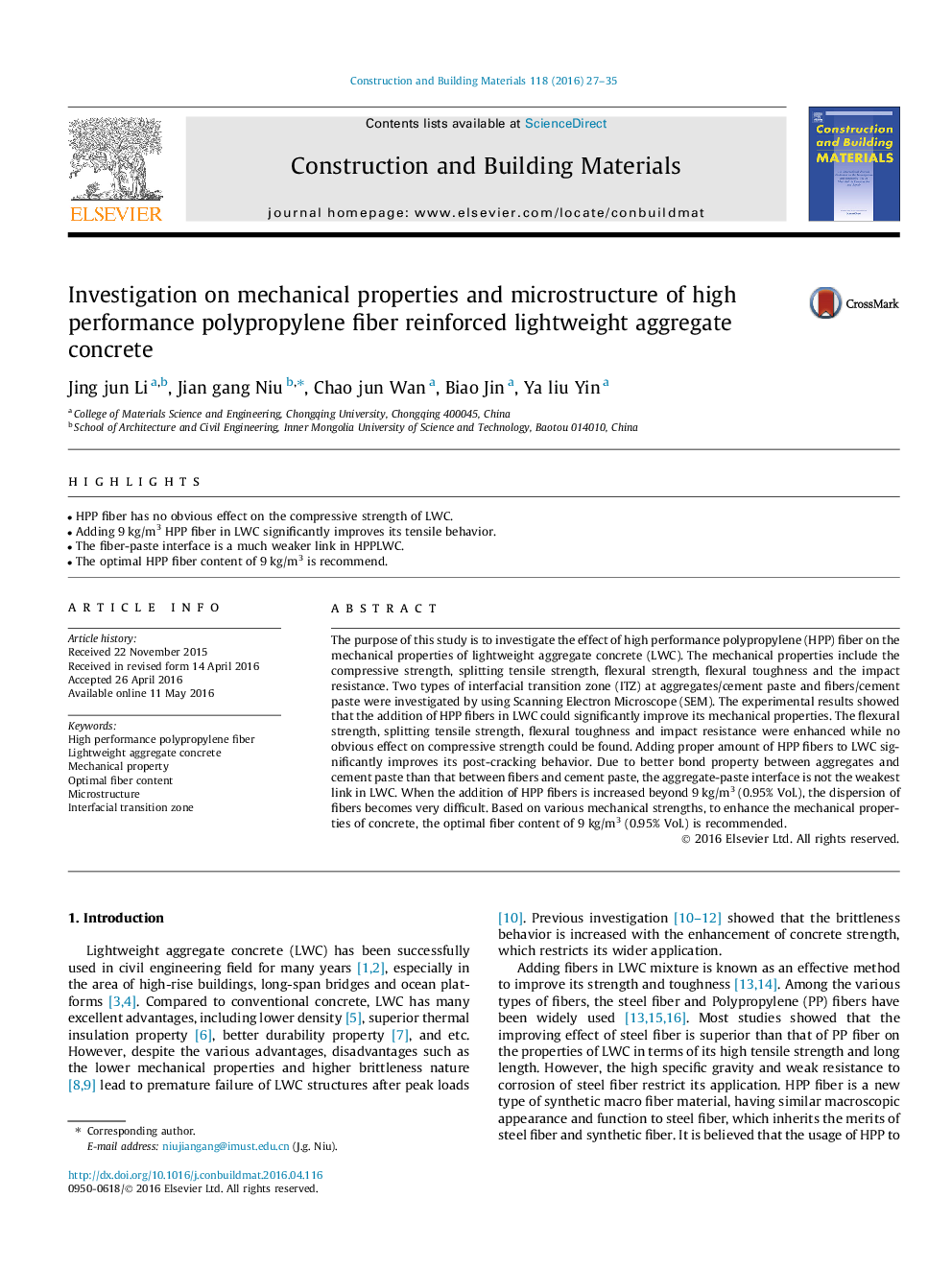| Article ID | Journal | Published Year | Pages | File Type |
|---|---|---|---|---|
| 255879 | Construction and Building Materials | 2016 | 9 Pages |
•HPP fiber has no obvious effect on the compressive strength of LWC.•Adding 9 kg/m3 HPP fiber in LWC significantly improves its tensile behavior.•The fiber-paste interface is a much weaker link in HPPLWC.•The optimal HPP fiber content of 9 kg/m3 is recommend.
The purpose of this study is to investigate the effect of high performance polypropylene (HPP) fiber on the mechanical properties of lightweight aggregate concrete (LWC). The mechanical properties include the compressive strength, splitting tensile strength, flexural strength, flexural toughness and the impact resistance. Two types of interfacial transition zone (ITZ) at aggregates/cement paste and fibers/cement paste were investigated by using Scanning Electron Microscope (SEM). The experimental results showed that the addition of HPP fibers in LWC could significantly improve its mechanical properties. The flexural strength, splitting tensile strength, flexural toughness and impact resistance were enhanced while no obvious effect on compressive strength could be found. Adding proper amount of HPP fibers to LWC significantly improves its post-cracking behavior. Due to better bond property between aggregates and cement paste than that between fibers and cement paste, the aggregate-paste interface is not the weakest link in LWC. When the addition of HPP fibers is increased beyond 9 kg/m3 (0.95% Vol.), the dispersion of fibers becomes very difficult. Based on various mechanical strengths, to enhance the mechanical properties of concrete, the optimal fiber content of 9 kg/m3 (0.95% Vol.) is recommended.
